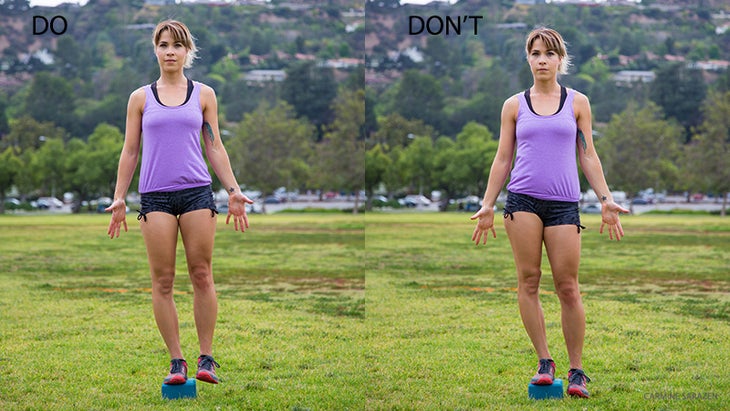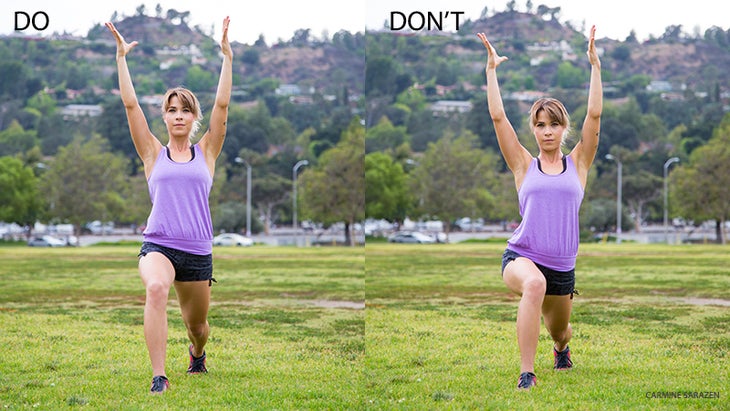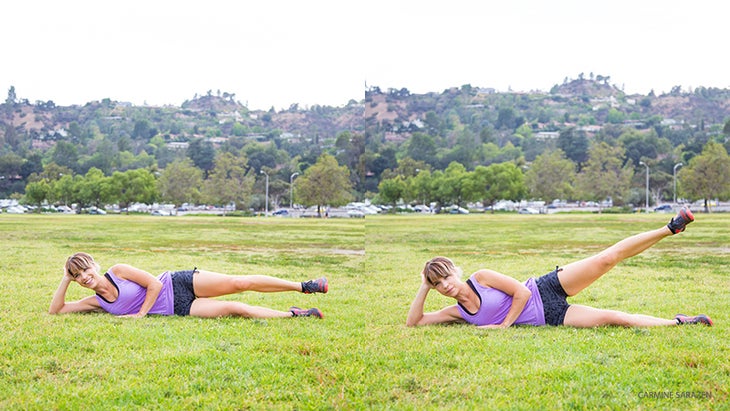Heading out the door? Read this article on the new Outside+ app available now on iOS devices for members! Download the app.

Tight or open, your hips need to be strong for injury-free movement. Learn how to build more stability in common yoga poses.
Stability in the hips is crucial for athletes—and everyone else: The hips’ primary function is to bear weight, and we need them to stabilize the upper body, support the lower limbs, and absorb shock from movements such as running and jumping.
The gluteus medius is the hip’s primary stabilizer. It originates from the outer, top rim of the iliac crest and inserts at the top of the thigh bone, covering the outer hip, and maintains stability in the joint with the help of the gluteus minimus. A lax, unsupported hip joint slides around unnecessarily, irritating the soft tissues and increasing the likelihood of alignment problems and overuse injuries elsewhere in the body. Simply put, the role of the gluteus medius is to minimize excessive movement by keeping the thighbone firmly integrated in the hip socket.
See also Anatomy 101: Understand Your Hips to Build Stability
4 Ways to Build Hip Strength + Stability
Standing and balancing poses can build both strength and stability in this muscle—when practiced with the appropriate engagement. Let’s take a closer look at how to turn on the gluteus medius in a few common poses.
WARM UP Since we want to build strength in the widest possible range of motion, it’s smart to precede these poses with a few stretches to lengthen the relevant muscles. Try Gomukhasana or Pigeon Pose.
Mountain Pose (Tadasana)

Back to basics! Symmetry in the hips is key for maintaining good range of motion, and this easy variation on Mountain Pose makes it easy to identify weakness on either side. Stand with one foot on a block and the other floating.
DON’T Let the hip of the standing leg sag out to the side.
DO Strongly engage the outer hip of the standing leg to bring the pelvis level. It’s useful to place the hands on the hips for reference; I also like to visualize the front points of my pelvis lining up horizontally.
Repeat a couple of times on each leg, noting whether one side is having to work harder than the other.
Also see A Sequence to Stretch + Strengthen Outer Thighs and Hips
Tree Pose (Vrksasana)

This takes our work in Tadasana one step further. As easy as Tree Pose seems to more experienced yogis, there is a lot to work on here in terms of hip stability.
DON’T Let your gluteus medius get lazy and let the standing leg hip sag out to the side.
DO Bring the pelvis level, find Tadasana again on the standing leg side: Gather the hip to the midline (activating gluteus medius) and press evenly through the standing foot. Ungrip the standing leg toes, and feel an active line of energy moving up from the arch of the foot to the inner groin. The actions of simultaneously rooting down and lifting up help support the engagement in the hip; the overall sensation is one of sitting “higher” in the joint, as opposed to sinking into it.
If you feel confident here, challenge yourself: Try slowly transitioning into Warrior III or Standing Pigeon without compromising the engagement and lift in the standing leg hip.
Also see Kino MacGregor’s Love-Your-Hips Gratitude Practice
Crescent Lunge

Try repeating the actions you learned in the last two poses to activate your gluteus medius for more stability in a High Lunge.
DON’T Let the hip of your front leg pop out to the side.
DO Engage the gluteus medius by firmly pinning the hip towards the midline of the body and drawing the thighbone back into the hip socket (I was once cued to imagine crushing a clove of garlic inside my hip joint—unusual, but effective!). From here, feel the the hip of the front leg rolling down towards the ground; next, attempt to drag the feet away from each other to widen the inner thighs, allow the lower back to lengthen and the tailbone to drop slightly.
Notice if it’s harder to maintain this alignment on one side than the other.
Also see 4 Steps for Shoulder Stability in Weight-Bearing Yoga Poses
Side-Lying Hip Abduction

Once you’ve found the work of the gluteus medius in a few common standing poses, you can do more to strengthen and balance it.
The key to this leg lift is to move slowly and maintain the muscular engagement, rather than relying on momentum to swing the leg up. On the way down, keep the outer hip engaged, resisting gravity as you slowly lower the leg. The muscles can start to fatigue pretty quickly here, letting you know you’re doing it right.
Again, take the time to notice if one side has more power than the other. Keep building strength in the weaker hip, working toward a feeling of evenness on both sides of the pelvis.
Also see Build Stability in Standing Poses
About Jenni Tarma

Jenni Tarma is a Los Angeles–based yoga teacher, runner and Crossfitter. She really, really likes to move, loves teaching yoga to Crossfit athletes, as well as leading traditional vinyasa-based classes. She’s currently studying with Sage Rountree to complete her Yoga For Athletes certification. Find her on: Instagram: @jennitarma and www.jennitarma.com
Photos by Carmine Sarazen